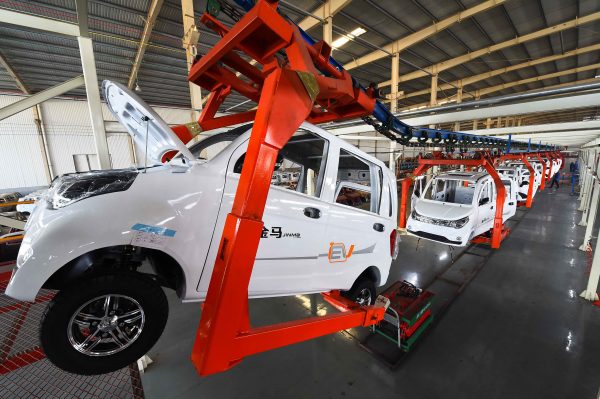

Follow us on:  
|


China’s economy has grown at a rate of 6.7 per cent so far this year, falling within government forecasts of GDP growth in the 6.5 to 7 per cent range. But some fear that a cooling of the economy could dent automotive sales growth in 2017 [Xinhua]
Emphasis will be on new energy vehicles or NEVs, which include electric and hybrid electric cars and commercial buses and trucks.
China sold about half a million NEVs in 2016 but is hoping to increase that to two million by 2020 and seven million by 2025.
Clean energy and hybrid cars are part of a government focus to reduce pollution and smog in major cities, including Beijing, which this year suffered a number of red alerts about extremely bad air quality.
China is currently the world’s biggest auto market but also wants to become an auto manufacturing powerhouse rivaling Japan, Europe and the US.
Automotive sales have increased steadily in the past decade and have since 2013 put China ahead of Western Europe and the United States.
Car sales in those regions have fallen or held steady largely due to economic stagnation or recession which has made consumers uncertain.
A growing Chinese middle class and increased affordability of locally manufactured vehicles has stimulated domestic consumption.
In 2016, General Motors’ sales in China rose 17 per cent; Toyota’s deliveries in the country climbed 12 per cent, while Honda Motor Co.’s sales jumped 24 per cent.
These figures are likely to increase if a new government proposal to ease restrictions on foreign ownership in the country’s joint-venture car makers is approved.
The government currently applies a ceiling on foreign stakes in joint ventures in the domestic auto industry at 50 per cent.
However, some auto manufacturers are worried that an increase in purchase tax on cars with 1.6 liter engines (or smaller) and a slowing economy may dent the 15 per cent sales growth from 2016.
The BRICS Post with inputs from Agencies